Daffodil leaves and rusty tools are unusual items to make sculptures with. Alice Fox ‘grows’ her tactile vessels using a simple, repeated button-hole stitch, anchored onto a metal base. Sustainability is a major part of Alice’s work. She sources many of her materials from her allotment garden plot.
Her beautiful vessels celebrate the unknown history of these aged garden implements.
Alice uses sampling to figure out how to build these structures, by testing out different plant materials in small scale experiments. This gives her the confidence to begin working at a larger scale.
You might be wondering how Alice is able to stitch daffodil leaves. Read on to find out how she constructed her work Hybrid 2, which she made for the Textile Study Group’s INSIGHTS project.
Perhaps you’ll find yourself viewing your own garden plants in a totally new way – as a potential source of working materials.
Name of piece: Hybrid 2
Year of piece: 2020
Size, techniques and materials used: 32cm x 8cm x 5cm, Drilling, cordage making & looping, Found tool, daffodil leaves
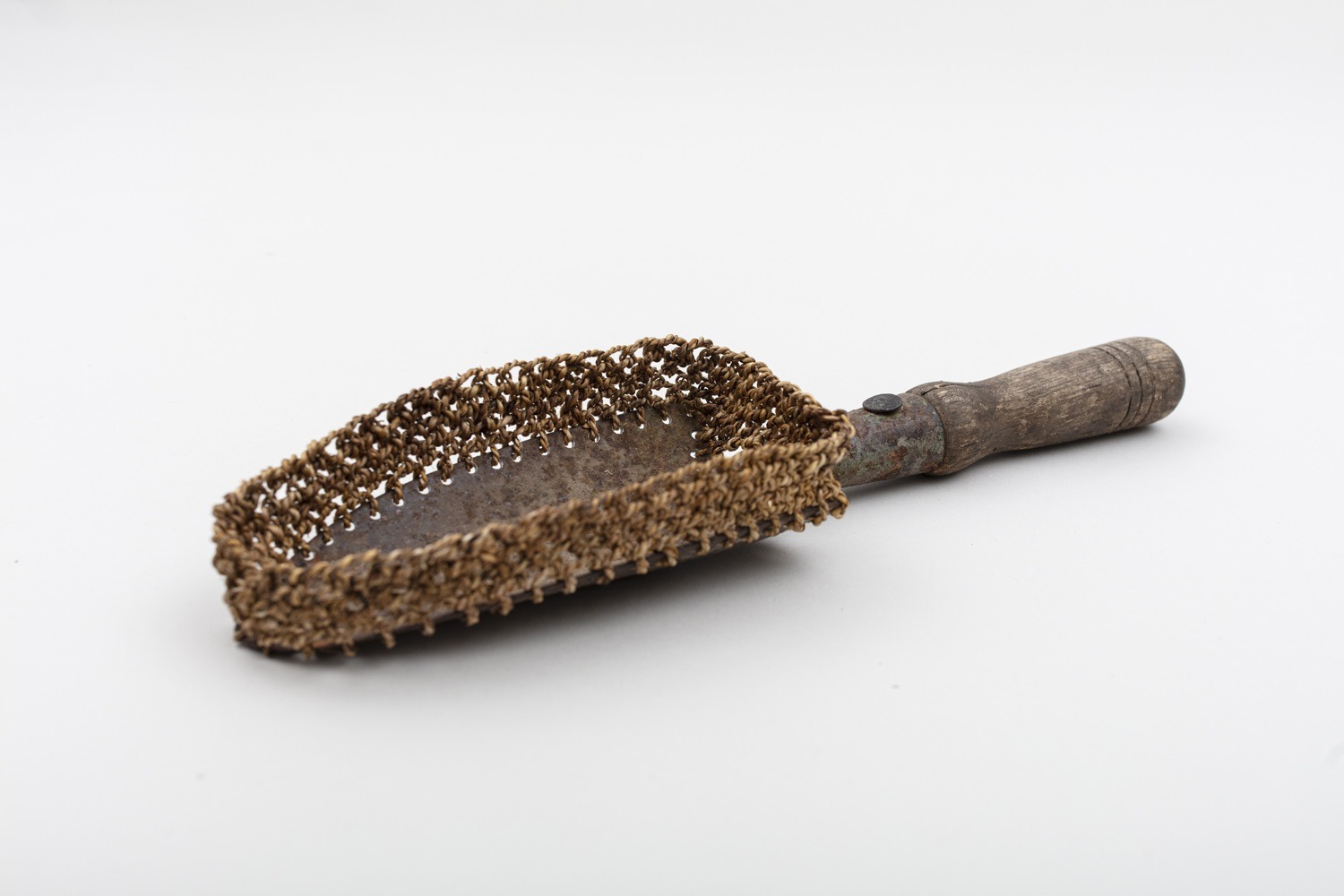
Finding connections
TextileArtist.org: How did the idea for the piece come about? What was your inspiration?
Alice Fox: Found objects often form a starting point for my work. These might be gathered on walks in my local area or further afield.
Found items form a tangible link to the place that they came from. By working with found objects and gathered materials, I’m able to create something that forms a personal record of the place these items are connected to.
My work is intimately linked with my allotment plot. Here, I have been exploring the variety of found, grown and gathered materials for several years. This ongoing exploration was initially the basis of my practice-based research for an MA degree, and it continues to form the focus of my current practice.
The starting point for this piece, Hybrid 2, was a group of old tools found in the shed on my allotment when I first took over the plot.
The tools are rusty and many are broken. I wanted to explore ways of working with these objects, either by working into them or by adding other materials, to create something unique.
Working three dimensionally, these objects became sculptural pieces celebrating the unknown history of the tools and the little piece of land that they have worked.
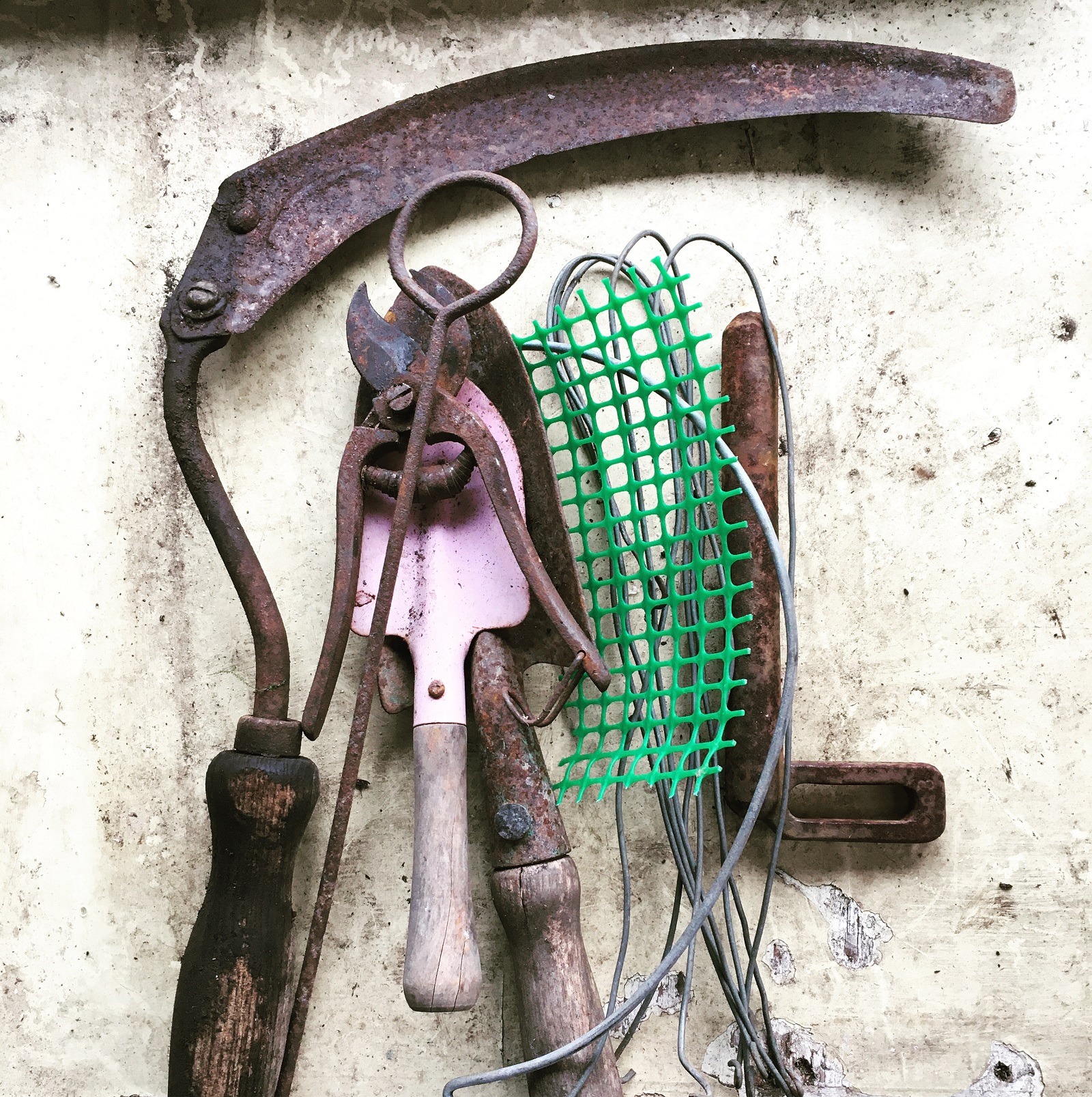
What research did you do before you started to make?
First, I created a series of small-scale experiments with a number of different materials.
Hand-processed plant material was twisted into cord, which was then brought together with found plastics, metals, ceramics and wood. These different elements were combined by wrapping, binding, stitching, weaving and looping.
As my experience and knowledge of the materials grew, so did confidence in my ability to make resolved pieces on a larger scale.
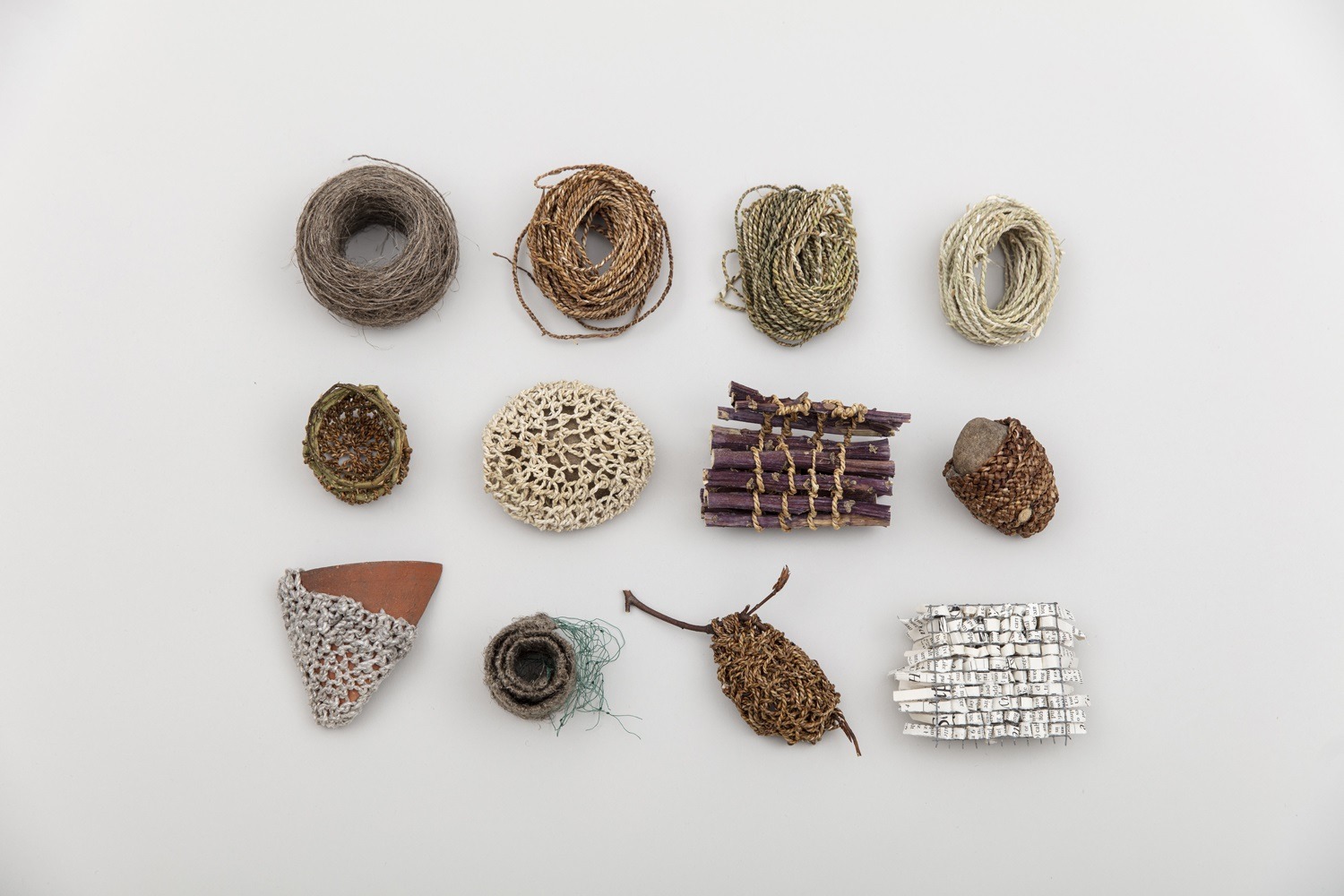
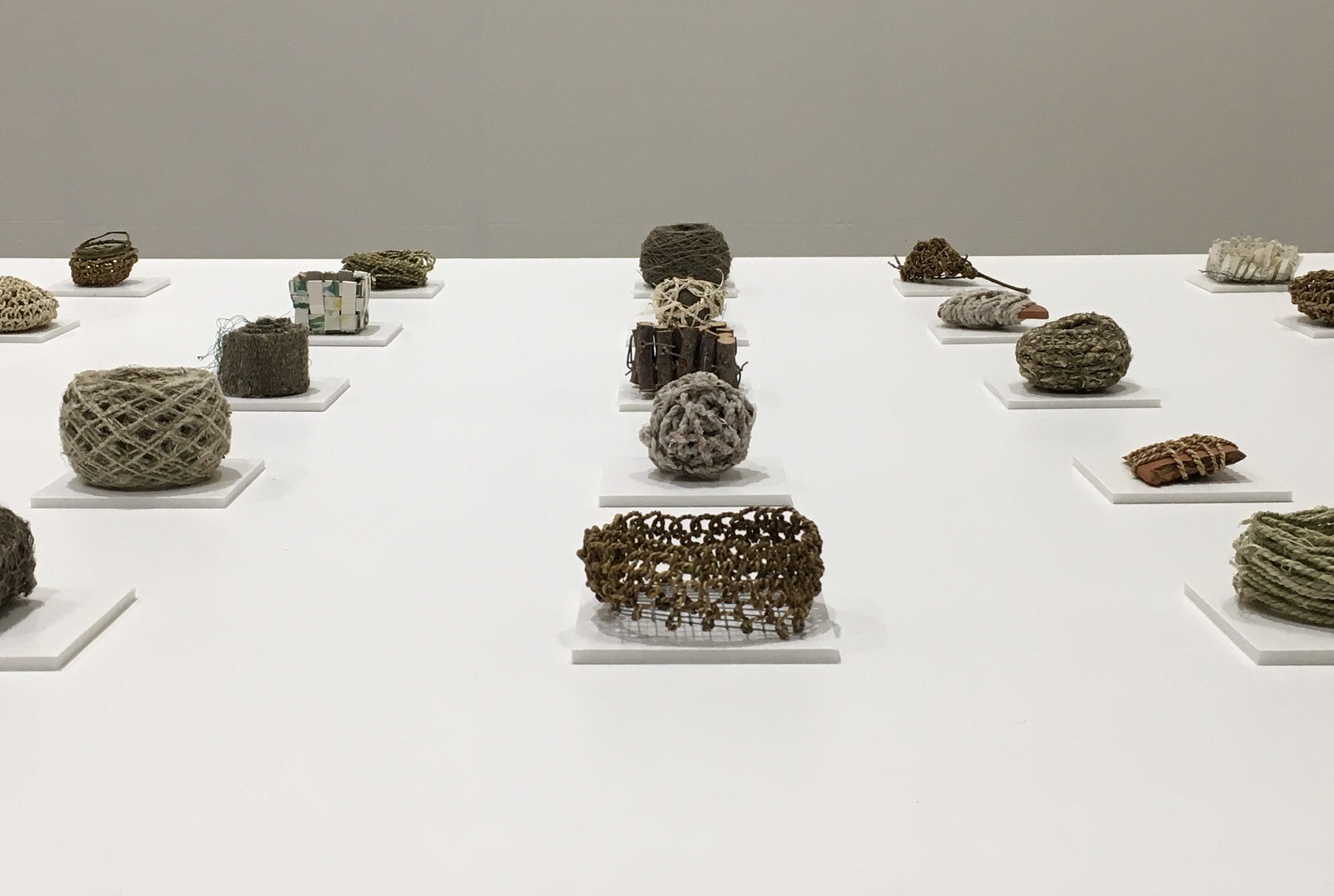
Rusty trowels and daffodils
Was there any other preparatory work?
This work is part of an ongoing exploration of the materials in my allotment garden.
Lots of different elements and experiences feed into this piece, even if they are not explicitly linked. I experiment all the time with the materials I grow and gather. I test different plants for cord-making and play with different ways to use the threads that I make.
Some of the techniques I use are borrowed from soft basketry, others are more traditionally associated with textiles. If I see a technique in a book or online, rather than using traditional materials, I try it out using the natural materials that are available to me.
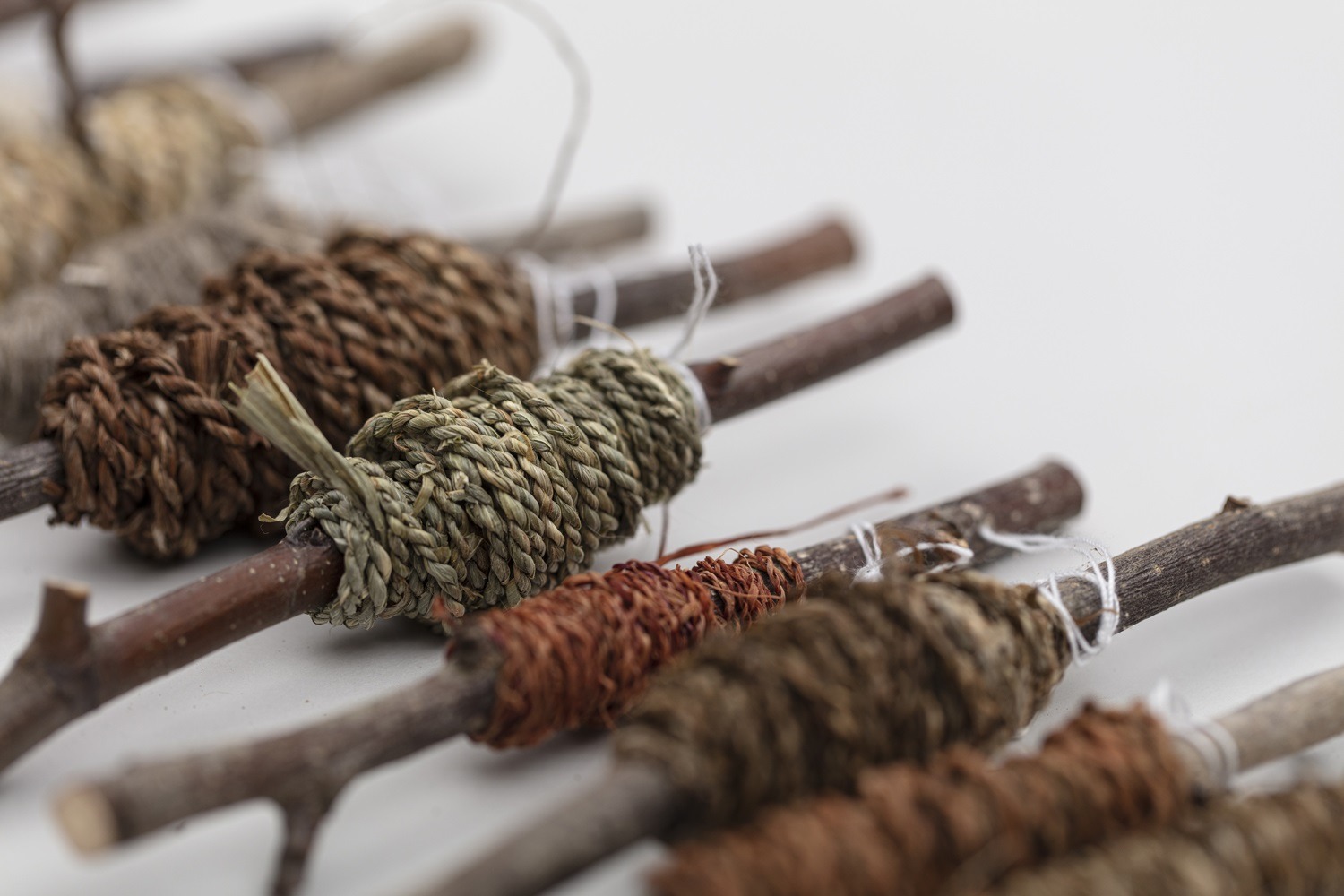
What materials were used in the creation of the piece? How did you select them? Where did you source them?
Hybrid 2 is made up of a rusty trowel and interlaced cord that I made from daffodil leaves.
The trowel was found amongst other old tools in the sheds on the allotment.
The daffodil leaves grow under the fruit trees on the plot. I gather the leaves in the spring after the daffodils have flowered. At this stage the leaves have started to dye down, returning their goodness to the bulbs for next year. I dry out the leaves and store them until I need them.
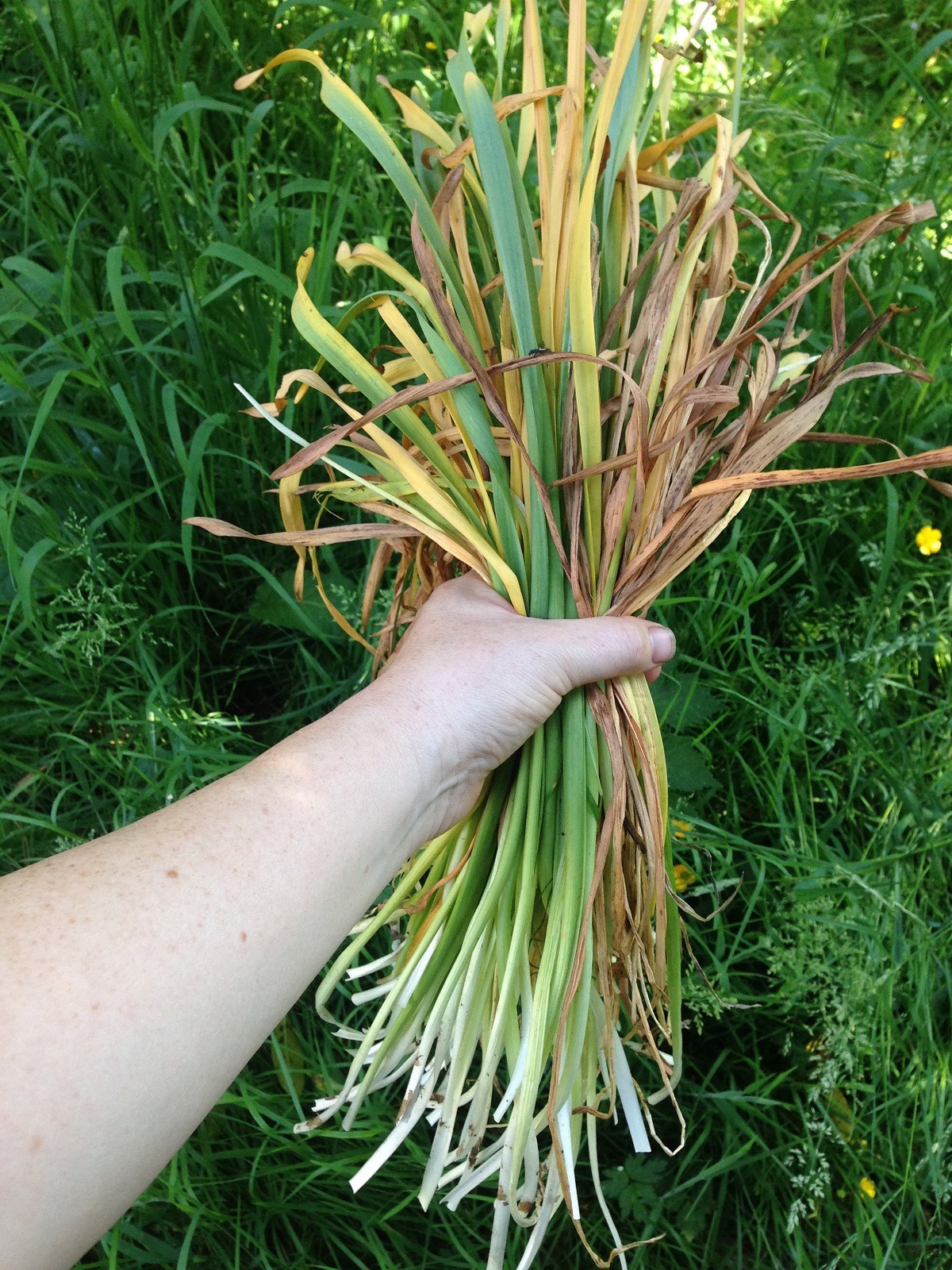
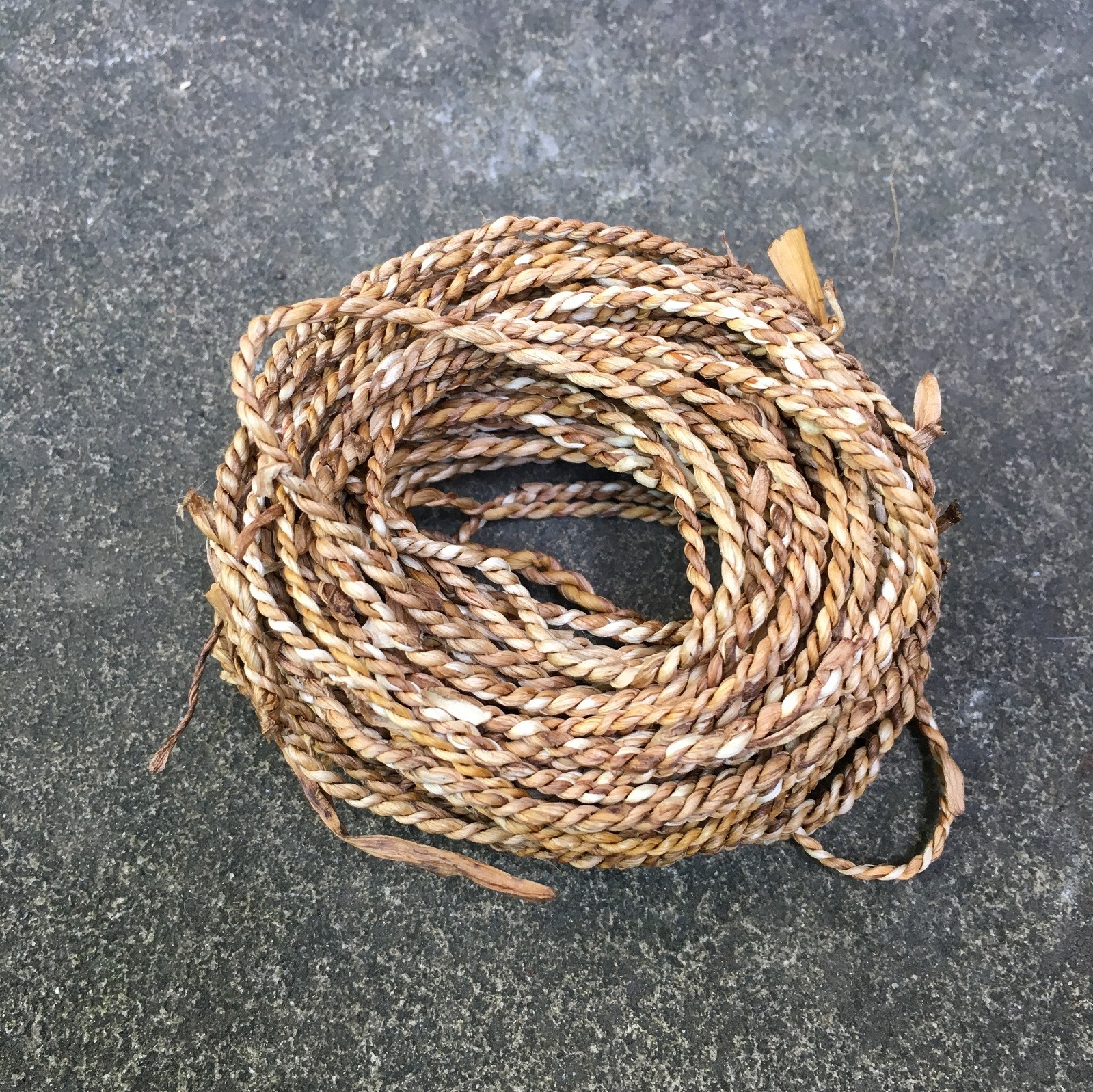
Structural stitching
Take us through the creation process
To attach the cord to the trowel, I need an anchor point. I use a pillar drill to make a row of holes around the edge of the metal trowel. This gives me the starting point for attaching the cordage to the object.
I dampen the leaves using a water spray bottle and wrap them in a cloth for an hour before working with them. This softens the leaves, making them more flexible.
By twisting two strands together in my fingers, I start to make the cord or string. This is essentially a two-ply thread. If a strand of fibre is twisted in one direction it will generally un-twist itself when you let go. So I use a ‘ZS’ twist structure to join the two strands of thread or fibre together. The strands are twisted together in such a way that they pull against each other and won’t unravel.
Then I feed the finished cord through each of the holes in the trowel in turn. Looping the cord through itself, in a version of a detached button-hole stitch or a large-scale version of needle lace, allows me to create the walls of the structure.
I work my way around the edge of the tool, and then continue working in a circular way, ‘stitching’ into each of the loops from the previous row. In this way, the vessel-like structure starts to grow up from the trowel base.
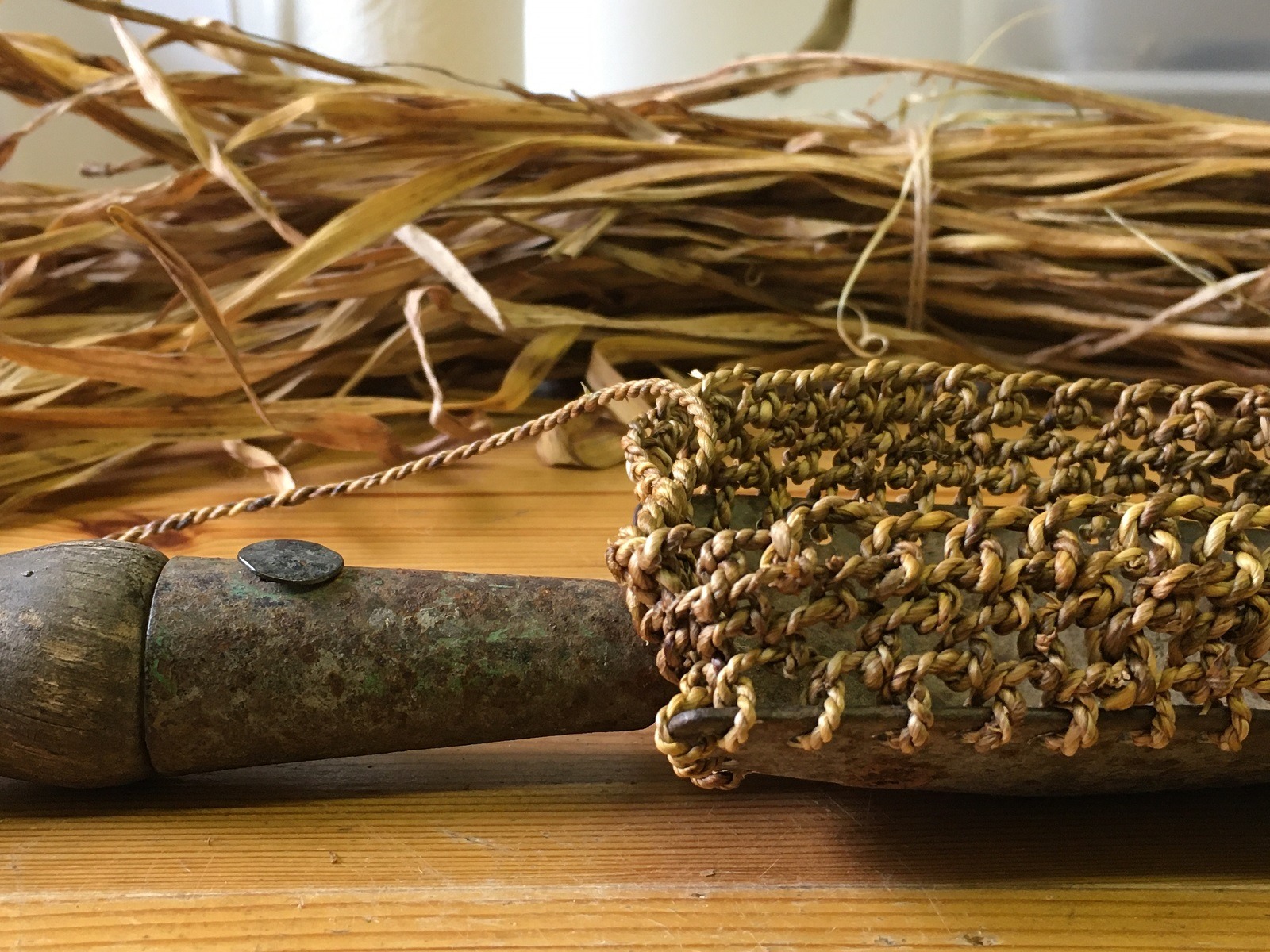
What journey has the piece been on since its creation?
I made Hybrid 2 during the development stages for the Textile Study Group’s INSIGHTS project. The piece featured in the book of the project and was shown in the accompanying exhibition at the Festival of Quilts.
This piece led me to make more work along similar lines. It is now part of an ongoing series, where I have made sculptural vessels using other tools using a variety of allotment-sourced materials.
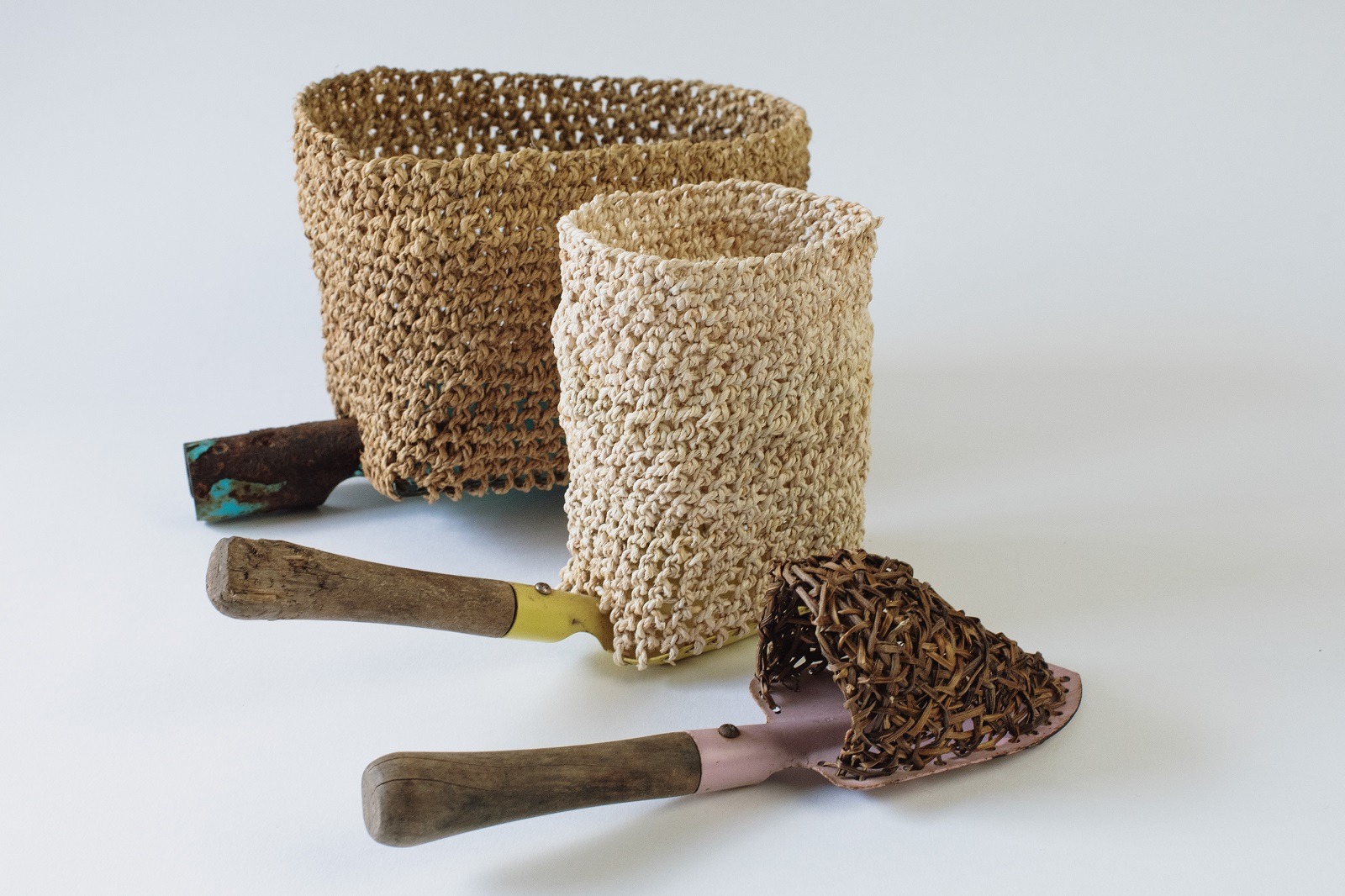
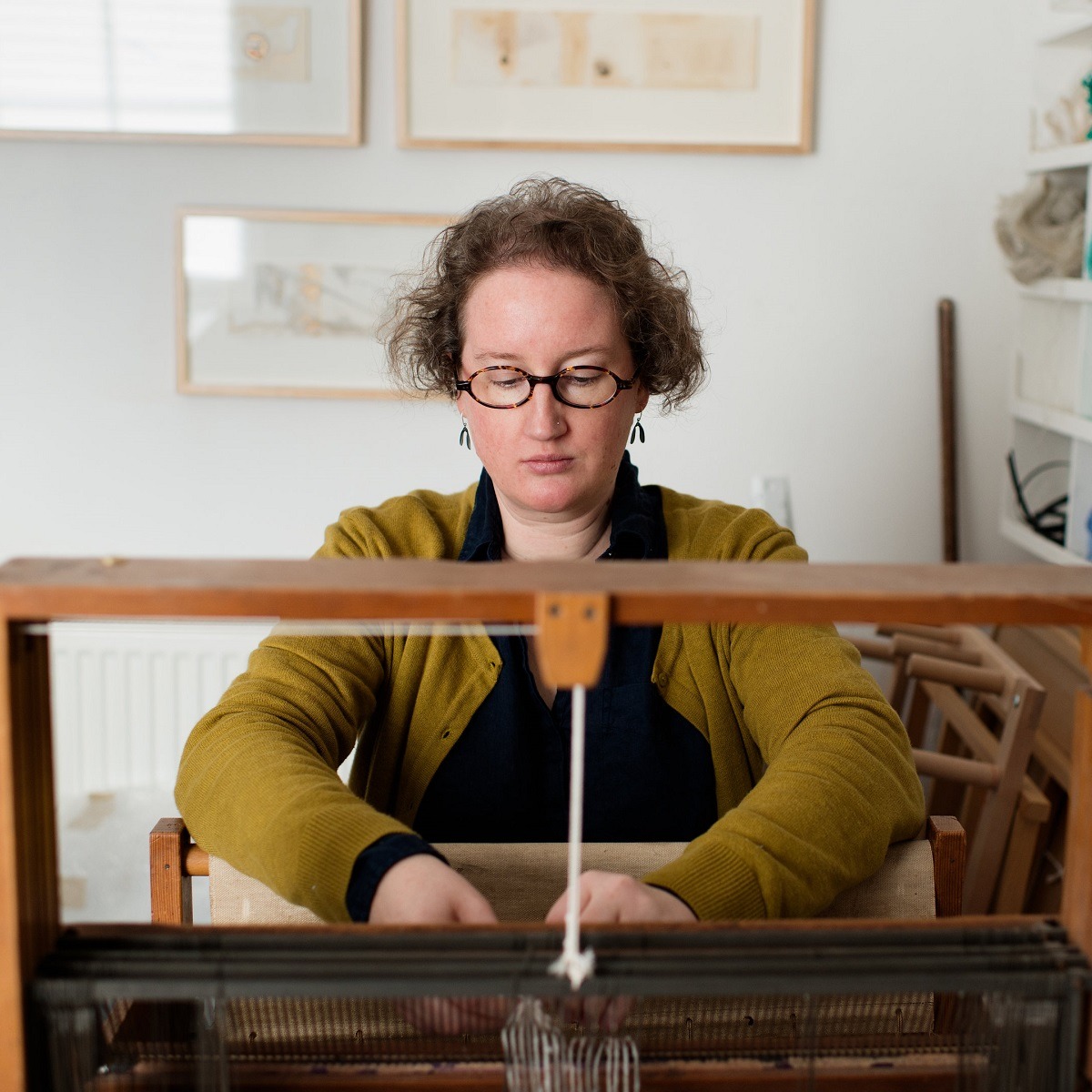
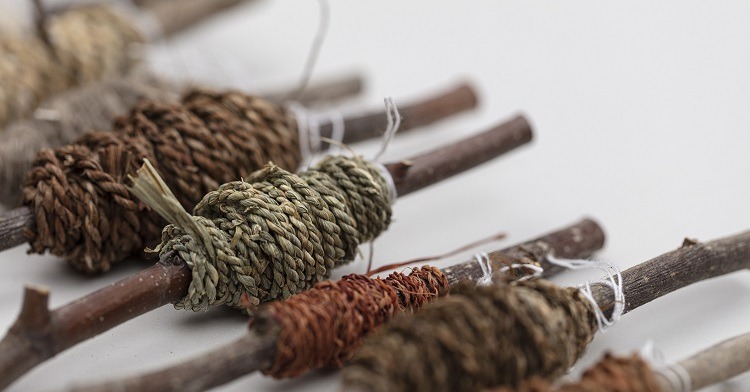
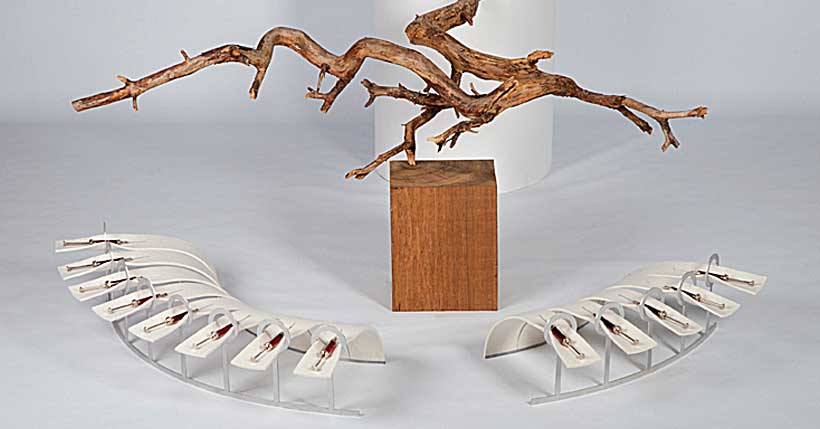
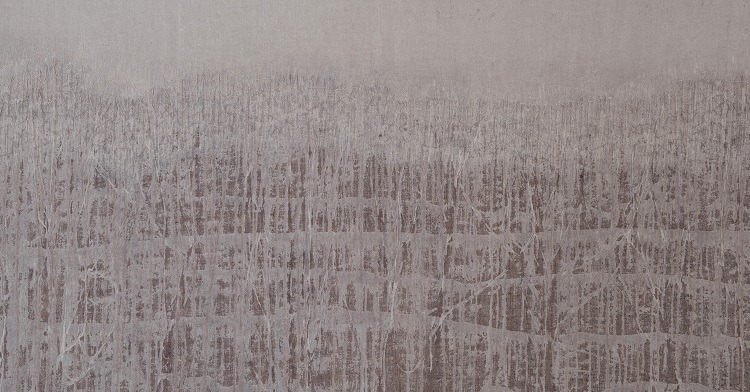
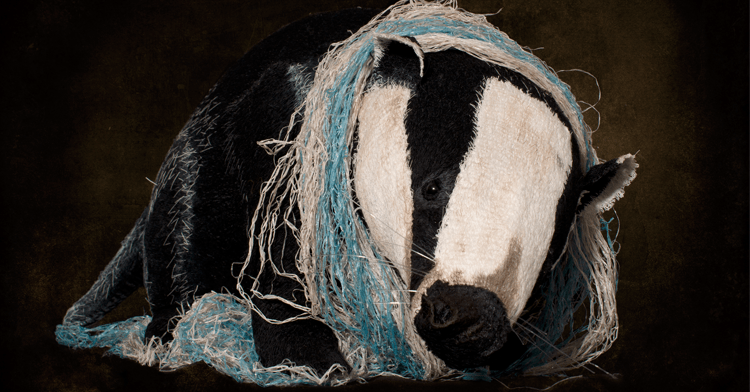
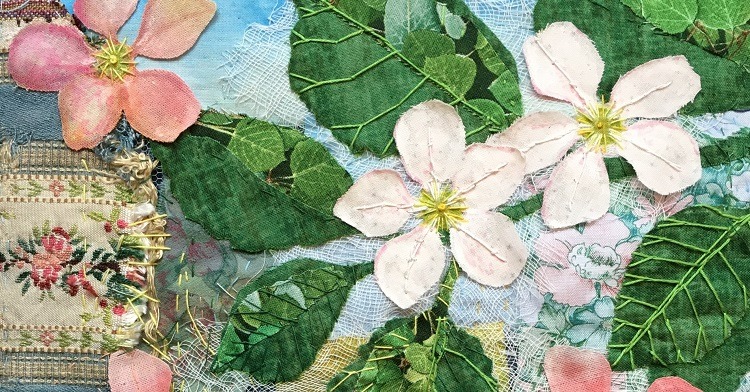
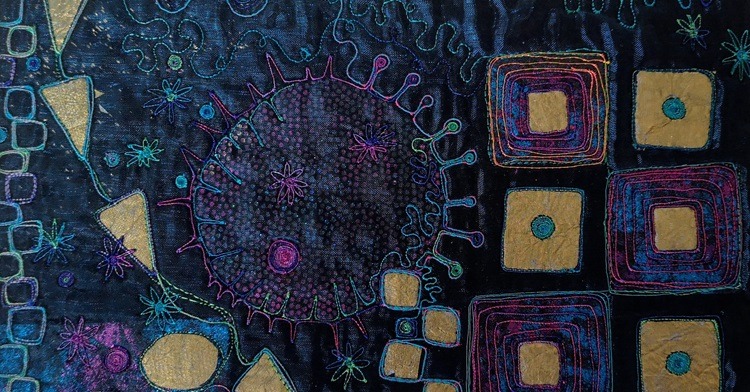
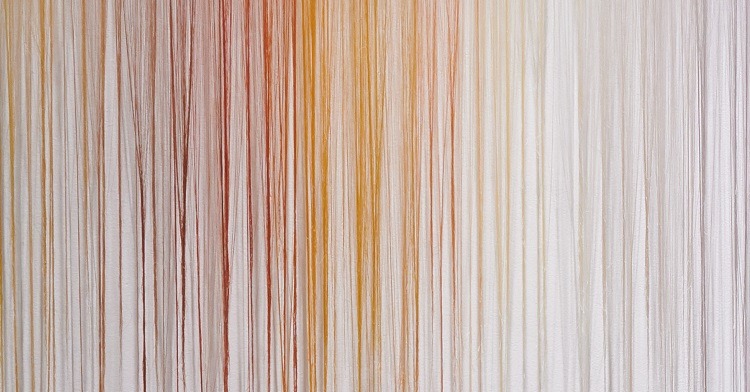
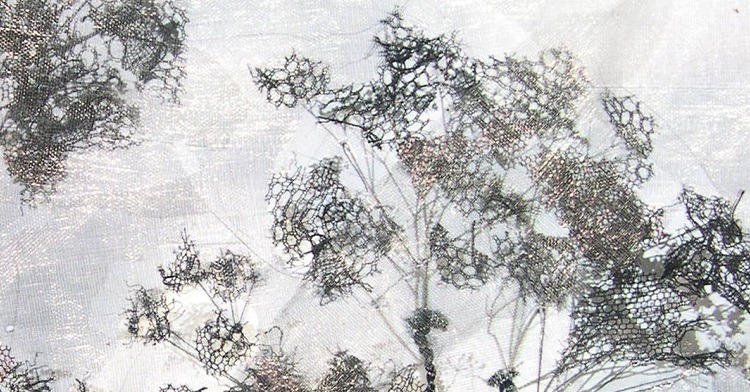
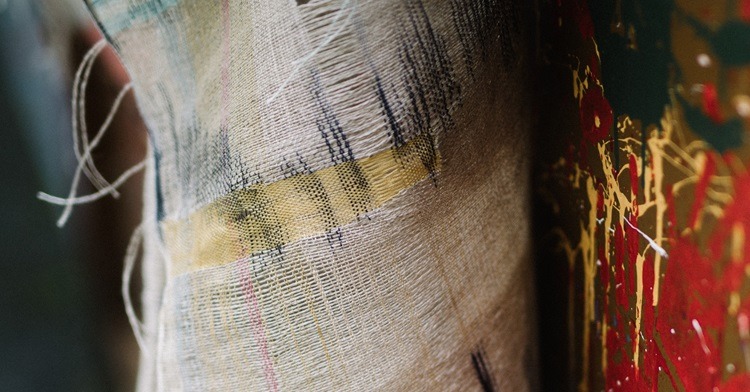
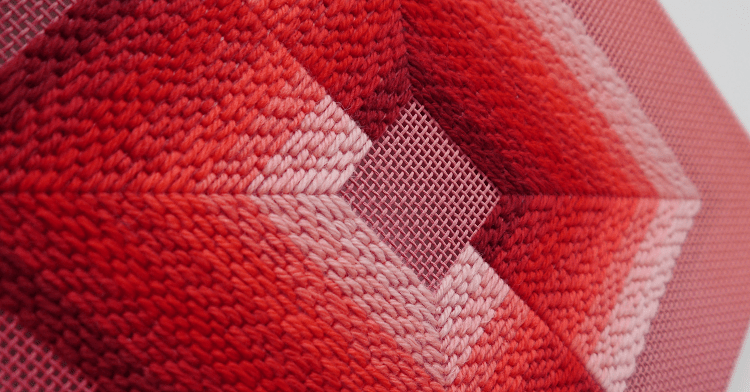
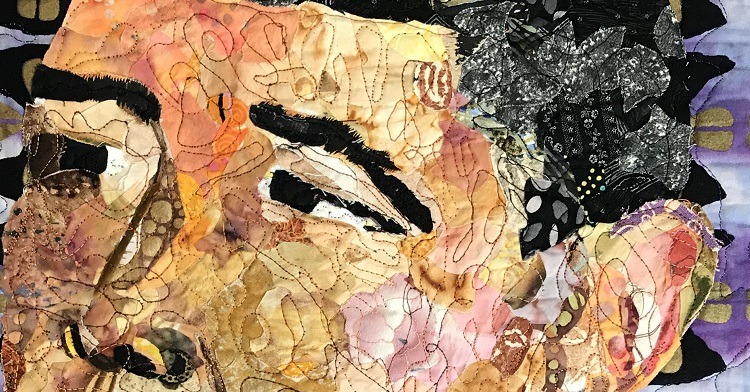
5 comments
Jann Wirtz
I made a picture ( 24 by 36 inches) on canvas with some Japanese Knotweed leaves. They were graded in size, and sealed and then painted from pale lime green (the smallest) to Crimson and arranged in a curve around 3 sides of the canvas.. They were anchored with fine black silk running stitches and some minute Japanese beads ( clear with black centres) sewn at an angle across the canvas. The piece was called ‘Year of Rain’. I cant send a pic as it sold very quickly… memo to always photo your work!!!
eva
Alice also runs live and online workshops which help participants develop their own ways of working with natural materials, found objects and their own “Place” – i joined an online course lasting 6 months last year, there were members from several countries as well as the UK which brought a wide variety of perspectives on Place and our responses to it – this will continue to influence and resonate in my work for a long time
susan brauner
Oh my. Beautiful natural daffodil leaves weaving. So inspirational. Thank you.
Norah Stocker
Such beautiful vessels. I adore your process and the plant base materials you create so inspiring. I love willow weaving but this opens many doors. Thank you
Elna
I really have to thank you for each enriching e-mail that I receive so regularly. I live in South Africa, and enjoy reading and exploring. These e-mails have brought me a lot of lovely new experiences.